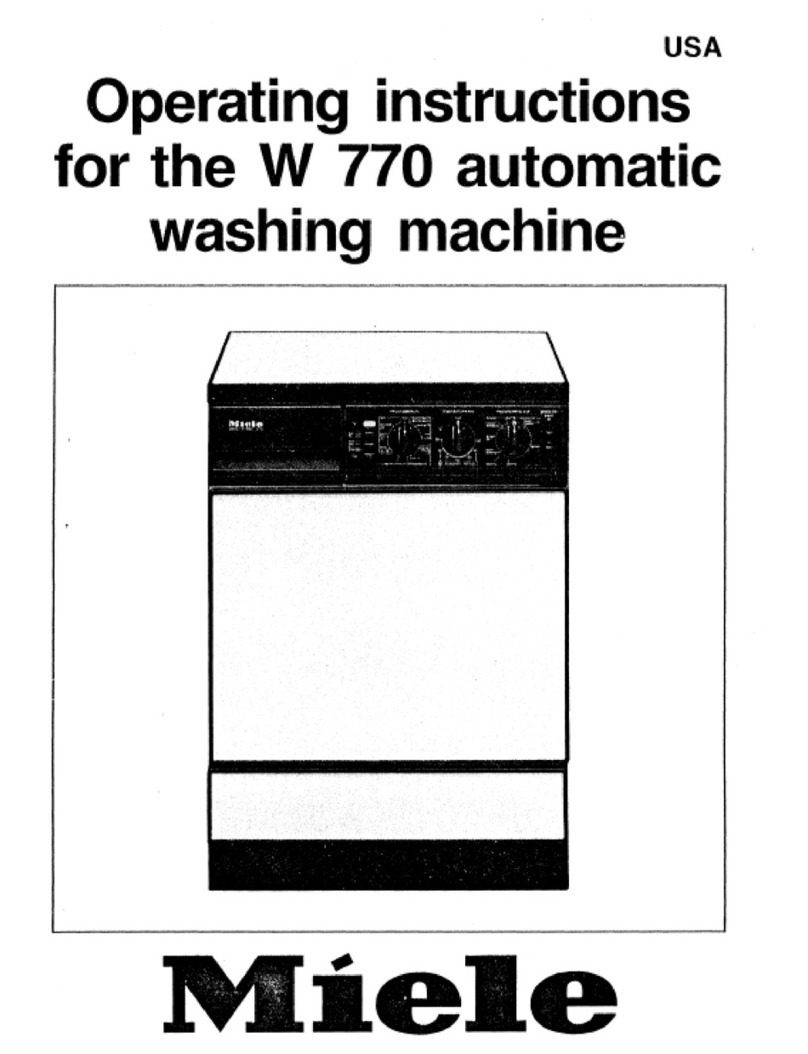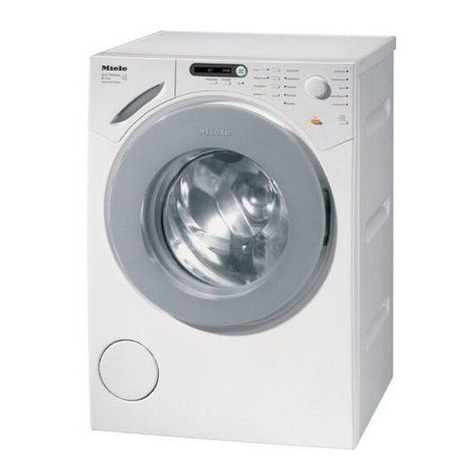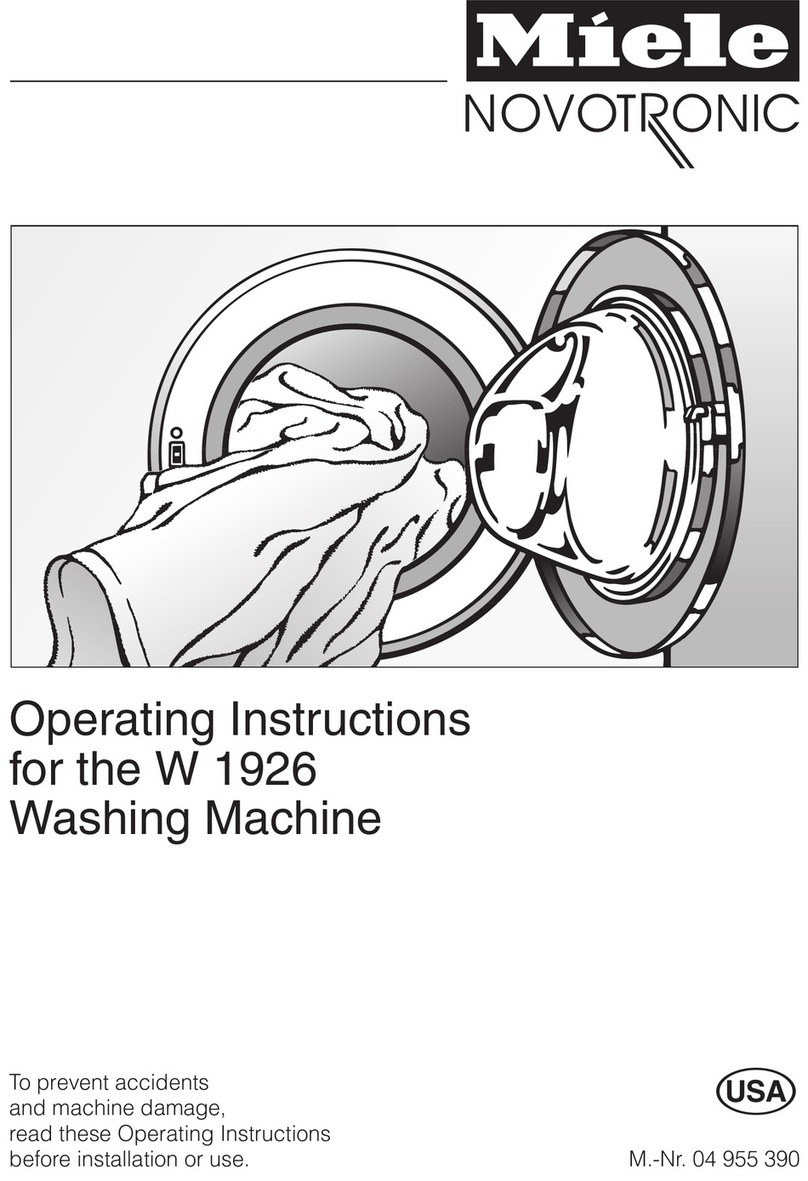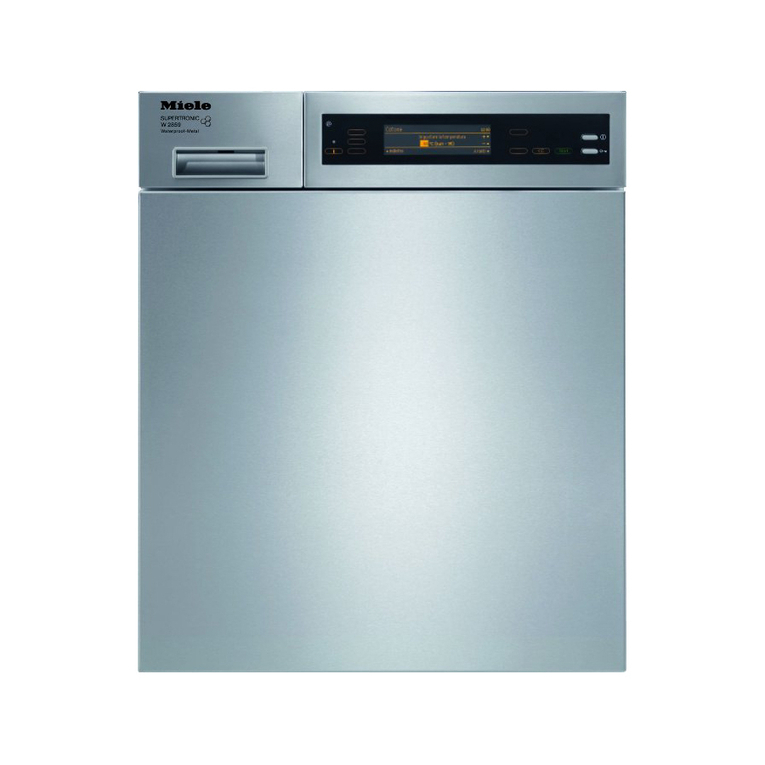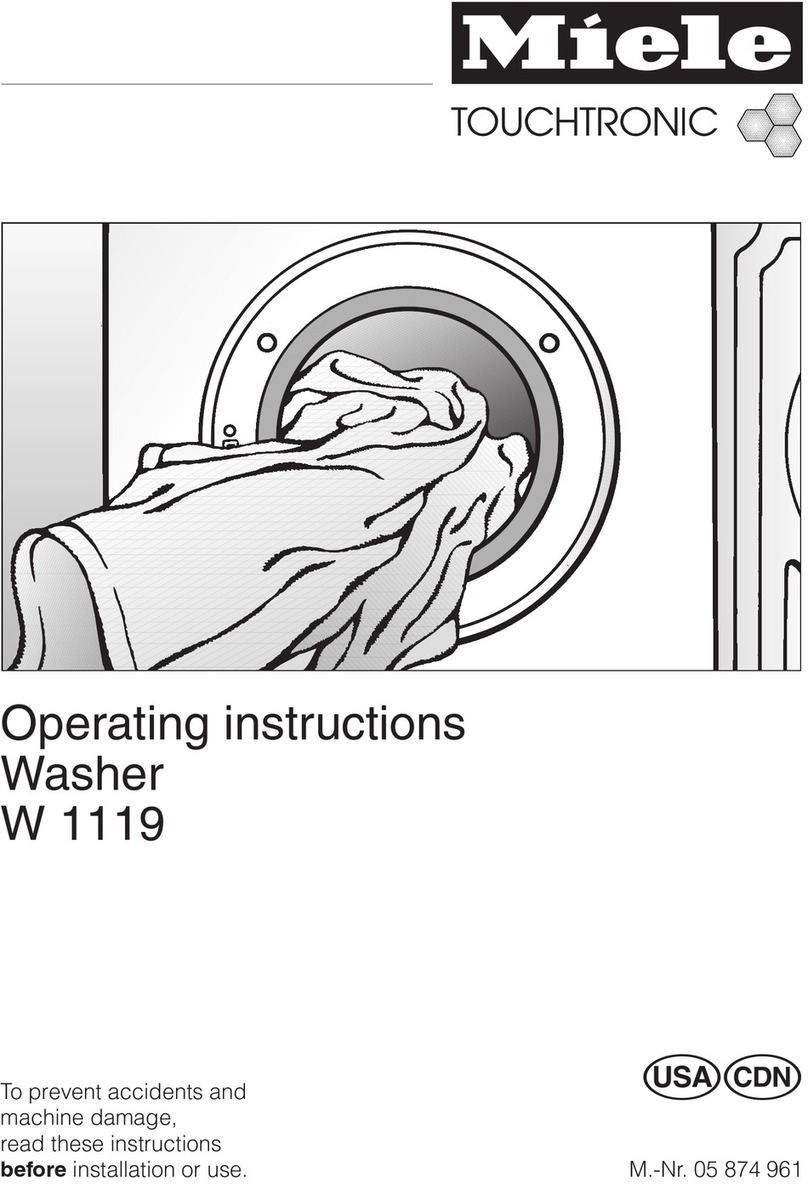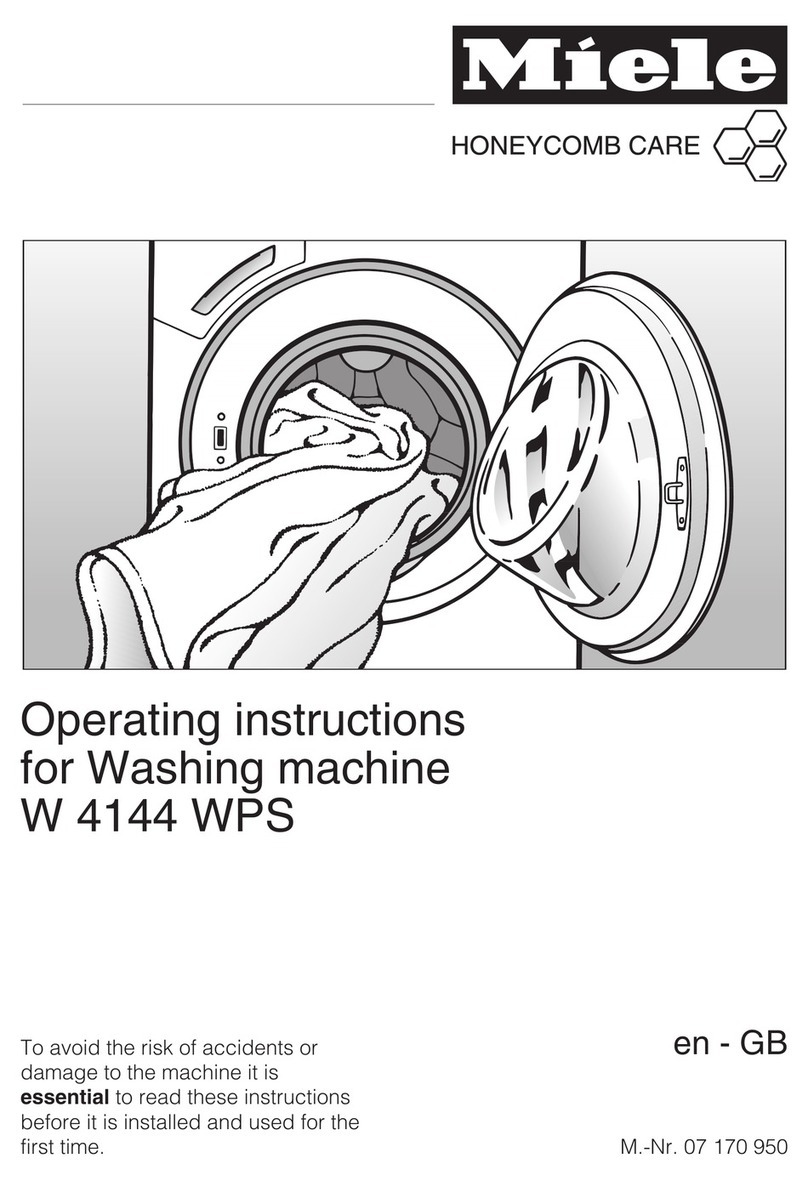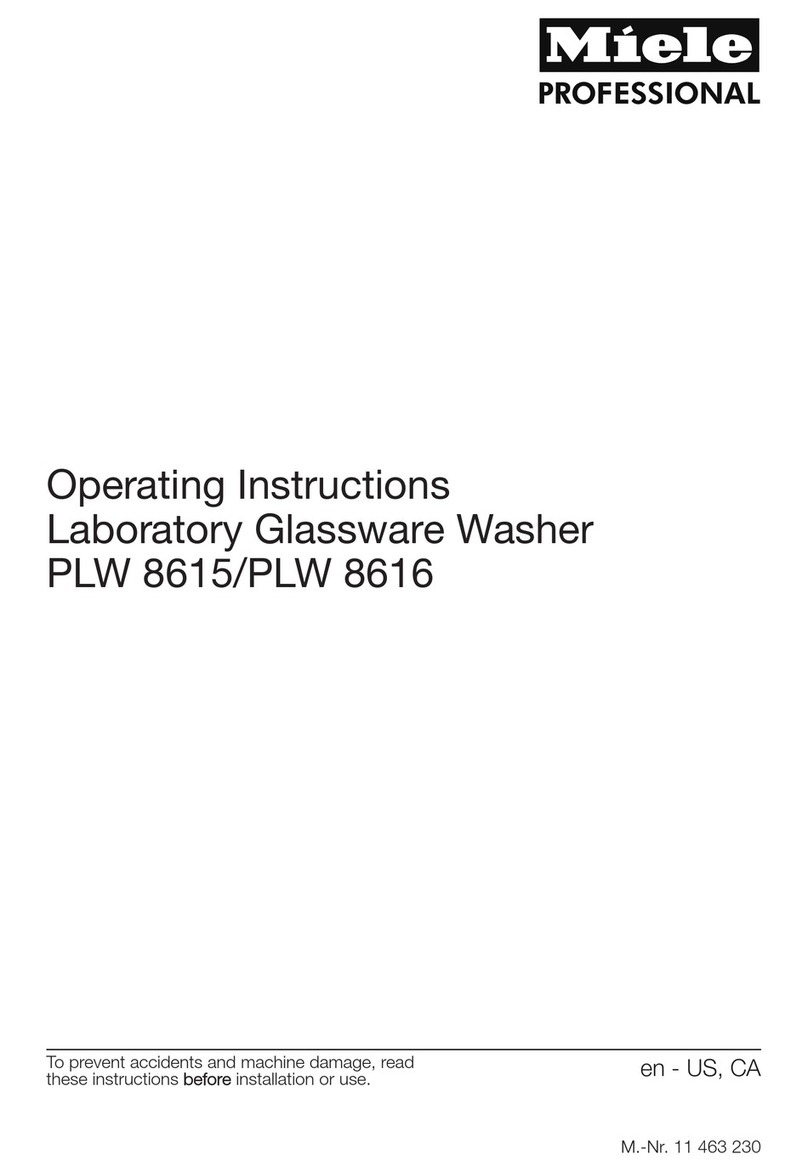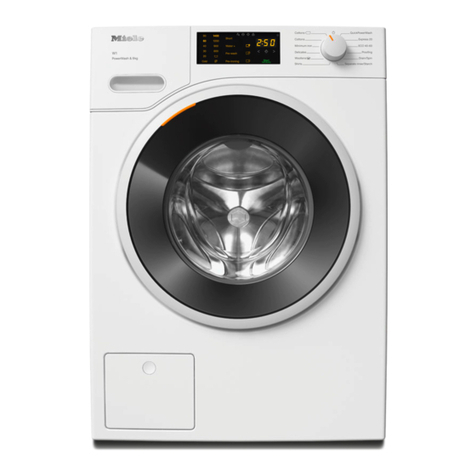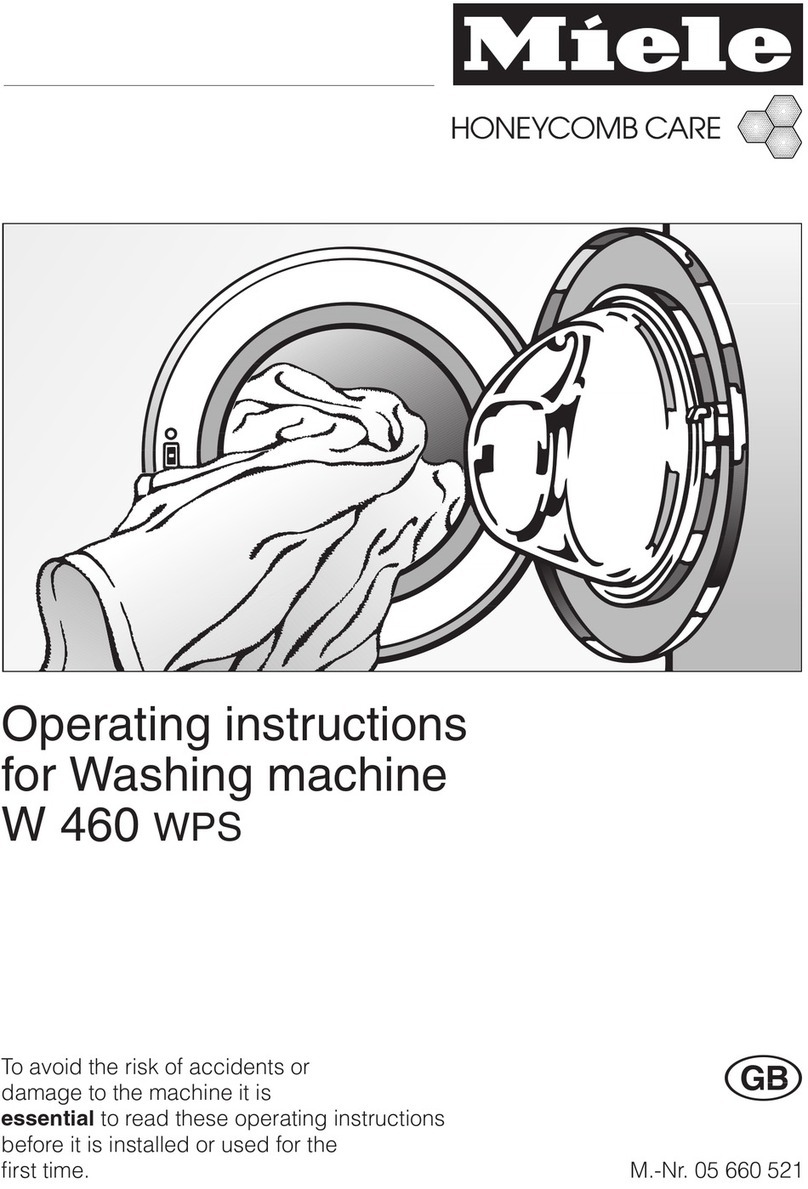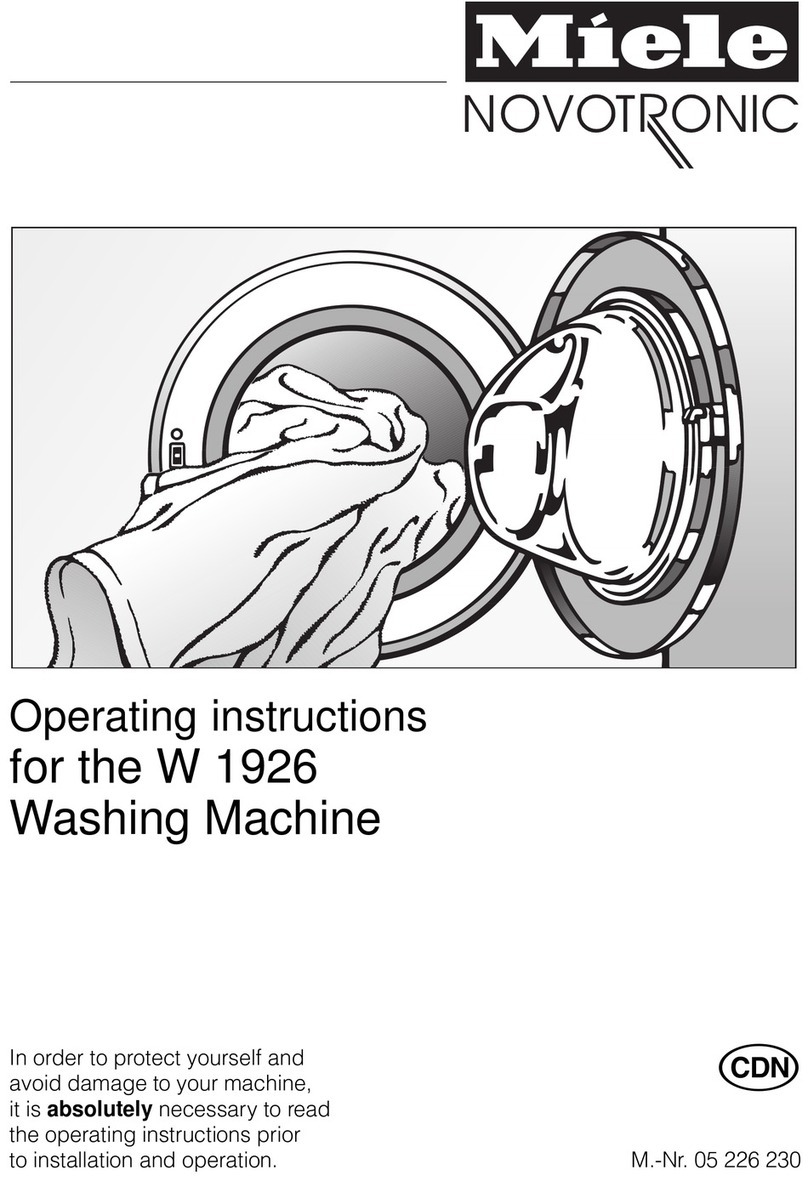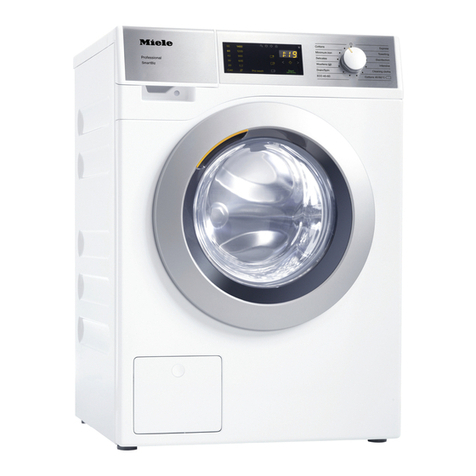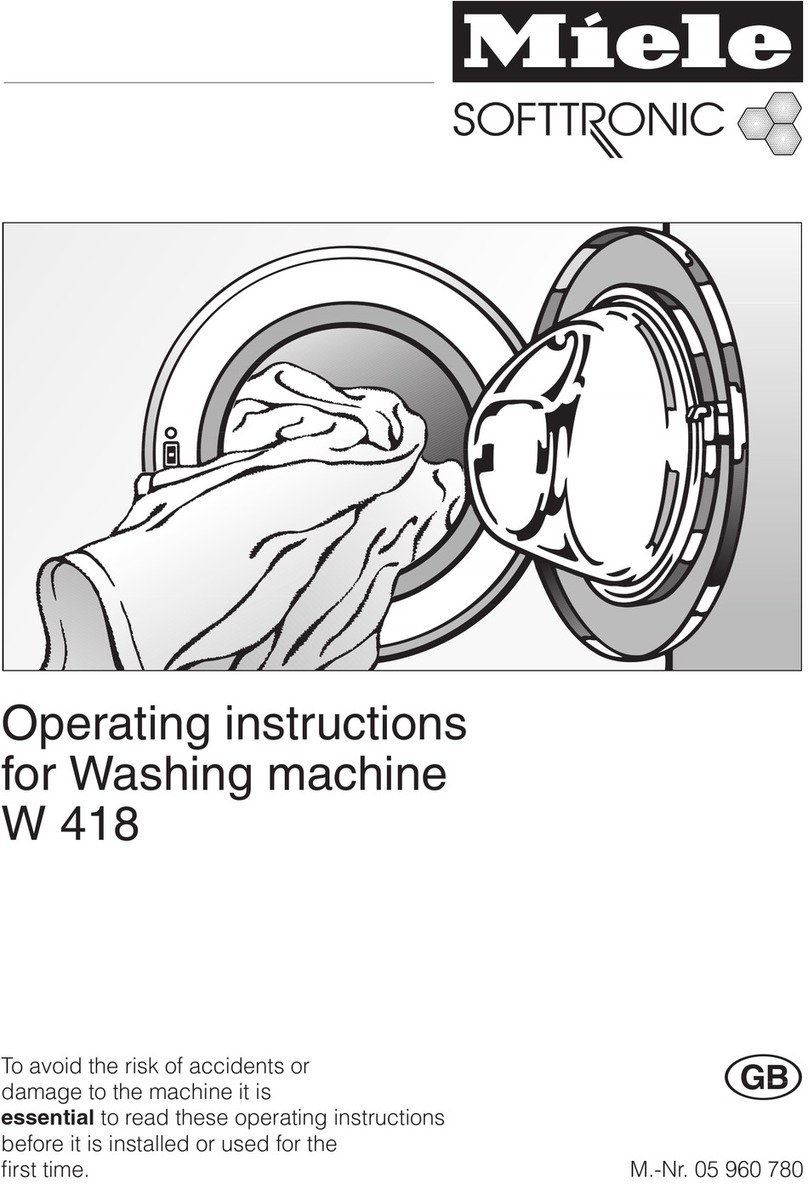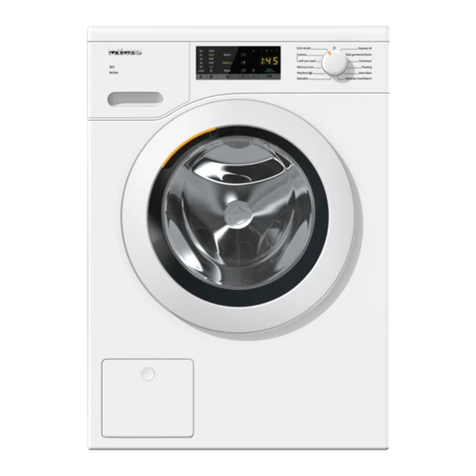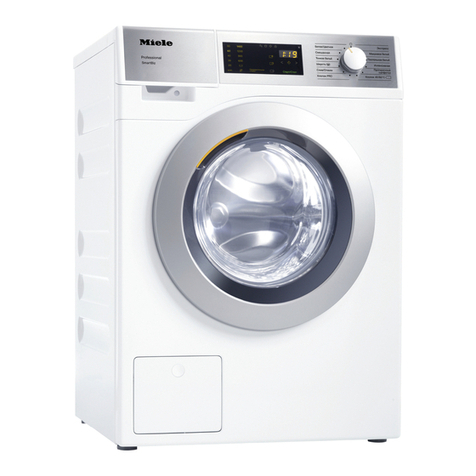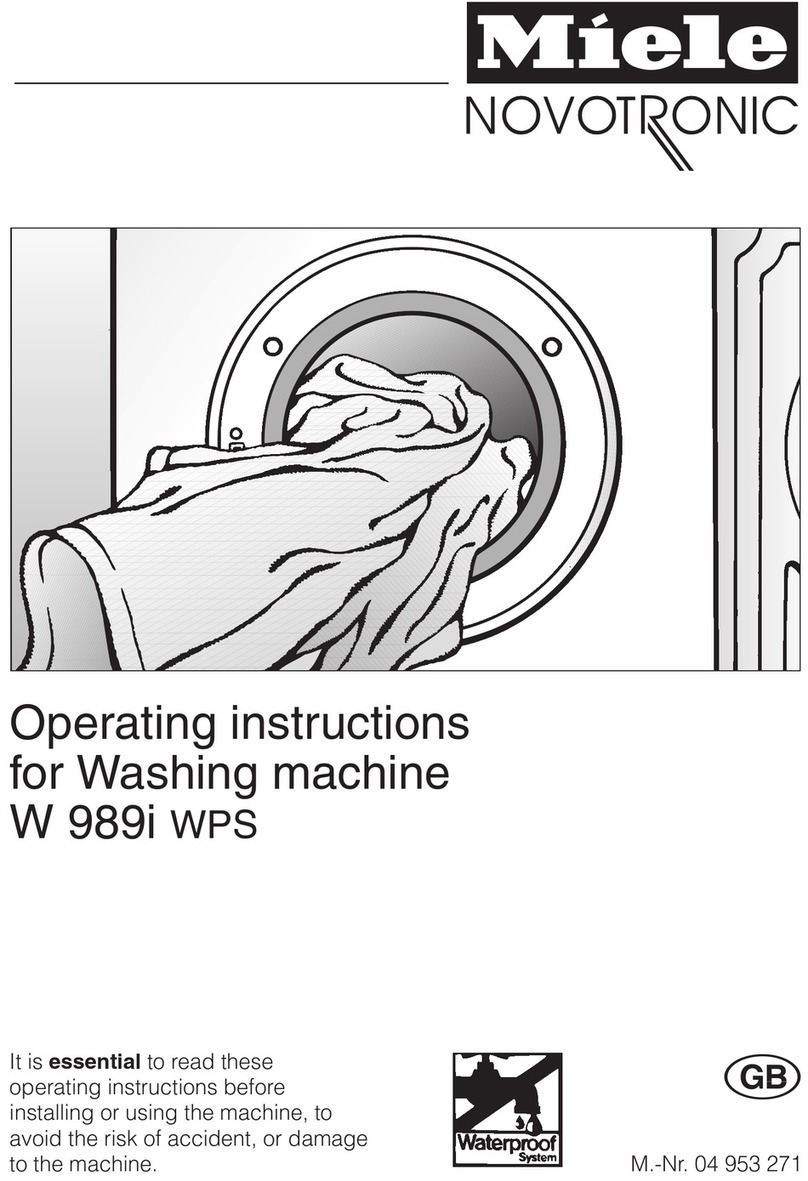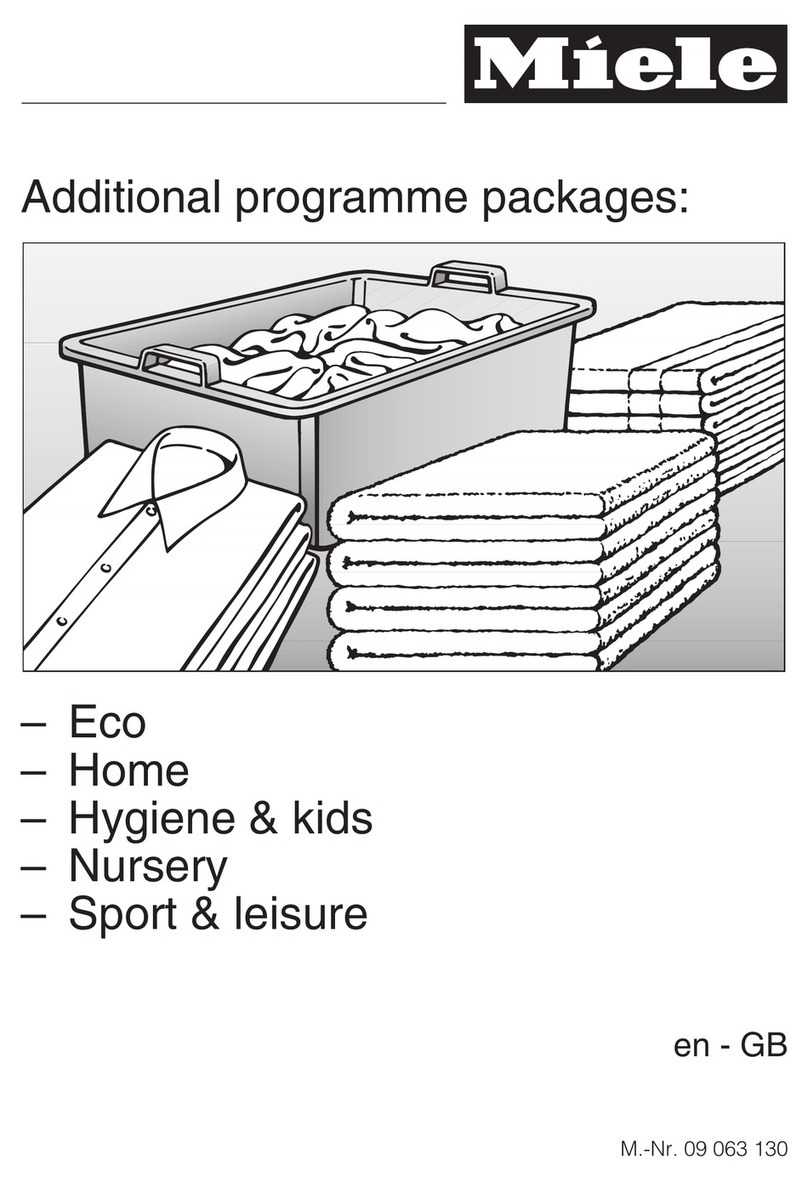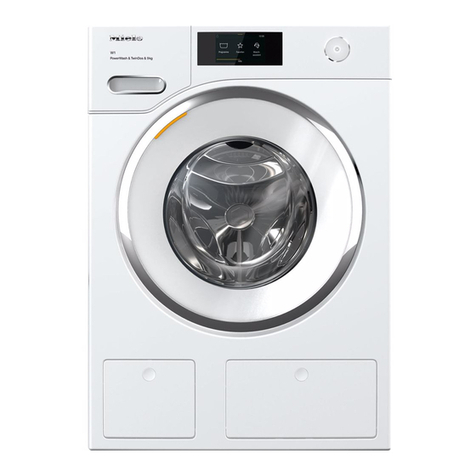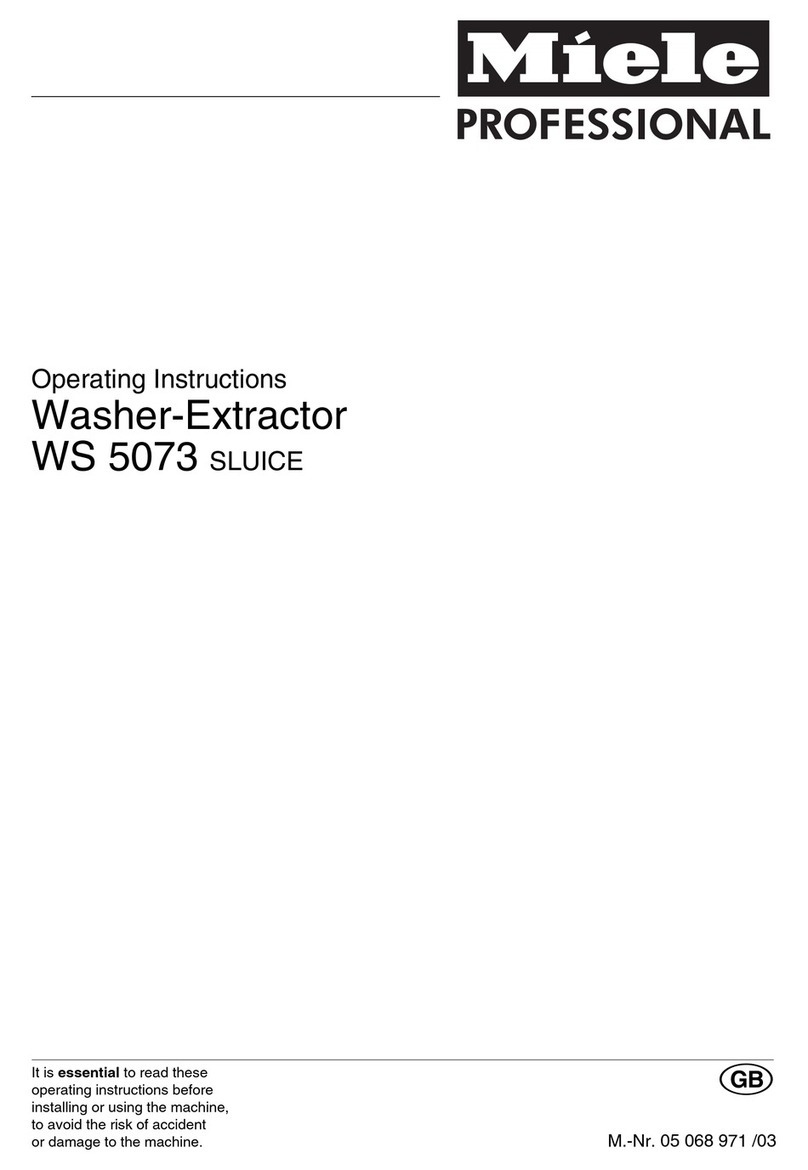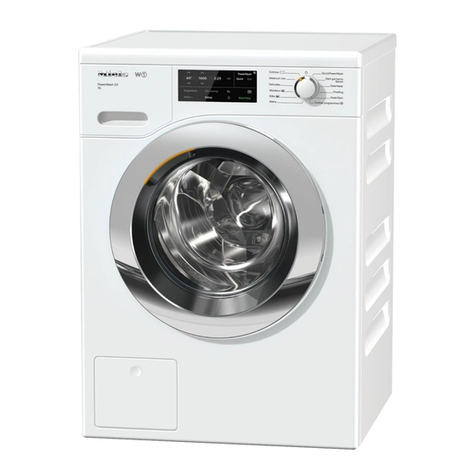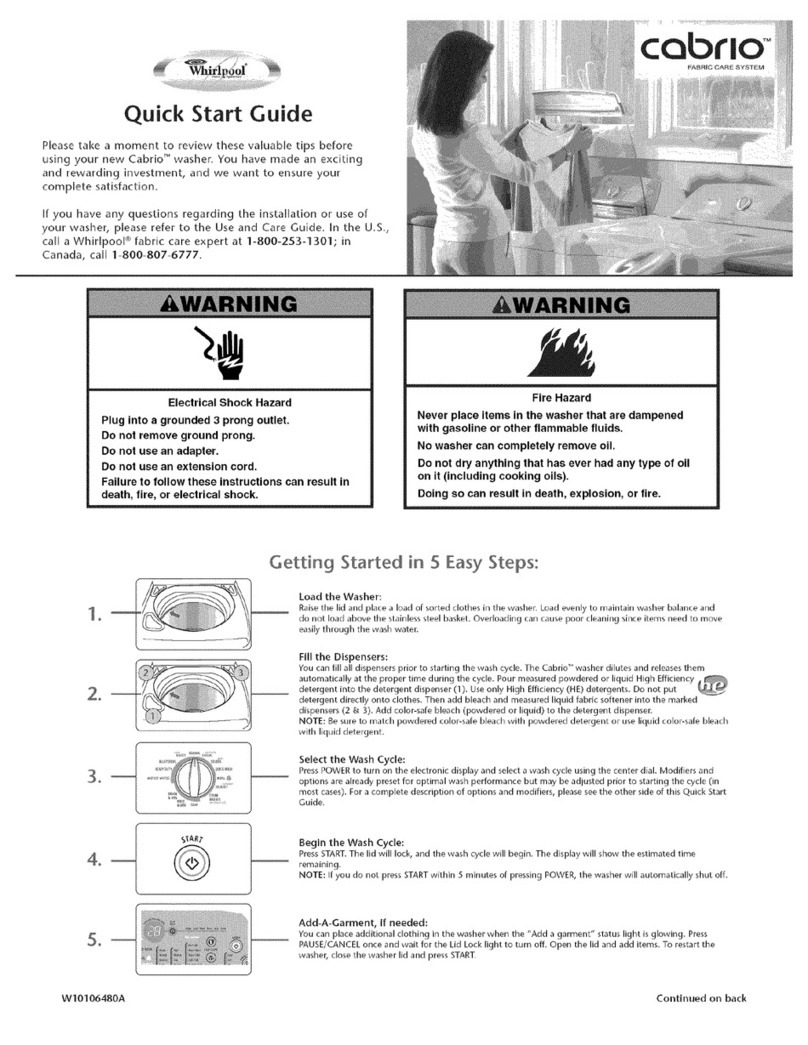Local regulations regarding regular in-
spection and maintenance of this ma-
chine must be observed. (In Germany this
machine is subject to laundry regulations
UVV (VBG7y), Sections 36 and 37, which
stipulate that washer extractors with a kinetic
energy of more than 1500 Nm must be
checked once a year by a competent per-
son for their operational safety and the re-
sults entered in a test log (book) supplied
with the machine for the German market,
and which must be kept at the place of oper-
ation and be available for inspection.)
Use of the machine
Never allow children to play in, on or
near the washer extractor, or to operate it
themselves. Please supervise its use by the
elderly or infirm.
Remember that the door porthole glass
can become hot during the operation of
the machine. Do not let children touch it.
When washing with high temperatures
steam can be emitted from the venting
slot behind the machine.
Do not grip between the suspended
drum unit and the seal of the front panel
cut-out during spin.
Always make sure the drum is stationary
before reaching in to remove washing.
Reaching into a moving drum is extremely
dangerous.
Water used for washing and rinsing must
not be used as drinking water. It must be
discharged into a proper sewerage system.
The machine should only be operated
unsupervised when there is a floor drain
(gully) in the direct vicinity of the machine.
To avoid flooding:
If hooking the hose into a sink make sure
that the water can flow away freely to avoid
flooding.
Secure the hose against slipping. The pres-
sure of the water flowing out can push an
unsecured hose out of the sink.
Chlorine or agents containing chlorine
are corrosive, and can under certain
conditions lead to irreperable damage to
components.
Disinfecting and cleaning agents often
have compounds containing chlorides in
them. If these agents dry on to stainless
steel surfaces, the residual chlorides will at-
tack the steel and can cause rusting.
To protect your machine from rust damage,
we recommend only using chloride free dis-
infecting and cleaning agents for washing
and disinfecting programmes and for clean-
ing stainless steel surfaces of the machine
itself.
If you are not sure about a particular agent,
contact the manufacturer of that agent for
advice.
If you accidentally spill an agent containing
chlorides on the machine it should be rinsed
off with water and dried using a soft cloth.
Proprietary dyes, dye removers and
descaling agents may only be used in
this machine if the manufacturer expressly
states that they are suitable for use in a
washing machine. There may be the danger
of fire or explosion.
Always follow the instructions of the
chemical manufacturer when using
cleaning agents and special application
chemicals. Only use such chemicals for the
purpose and in the situation specified by the
manufacturer in order to avoid the danger of
adverse
chemical reactions and material damage.
If in doubt check the suitability of the prod-
uct for use in this machine with the manufac-
turer before using it.
Where a chemical cleaning agent is rec-
ommended on technical application
grounds, this does not imply that the manu-
facturer of the machine takes responsibility
for the effect of the chemical on the material
of the items being cleaned or on the ma-
chine.
Please be aware that changes in formula-
tion, storage conditions etc., which may not
be publicised by the chemical producer, can
have a negative effect on the cleaning result.
Warning and Safety Instructions
M.-Nr. 06 006 850 5
